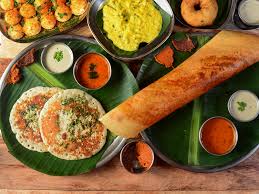
South Indian cuisine is an exquisite tapestry of flavors, aromas, and textures that offers something for every palette and sense. Not just characterized by dosa and sambar; South Indian food also honors fresh ingredients and traditional cooking techniques with many varieties, from spicy curries to delectable rice dishes that tantalize taste buds while providing numerous health benefits.
As more people become health conscious, interest has risen to make traditional South Indian dishes even healthier. From novice cooks to culinary veterans alike, there are simple tricks that can add nutrition to meals without compromising flavor! So let’s discover together how we can all enjoy South Indian favorites while increasing nutritional value!
South Indian food can offer numerous health advantages
South Indian cuisine is an unrivalled treasure trove of flavors and nutrients, comprising rice, lentils, and an abundance of vegetables, which naturally provide essential carbohydrates, proteins, and essential vitamins.
Dosa and idli are two popular fermented South Indian dishes, both offering probiotic benefits that promote gut health by adding essential probiotics into our diets. A healthier gut can improve digestion as well as overall well-being.
Spices play an essential part in cooking. Turmeric, cumin, and coriander not only add depth to dishes but also come with anti-inflammatory properties that may help boost immunity.
Abundant use of fresh herbs elevates both taste and nutrition levels in meals, including greens such as curry leaves which contain iron and other micronutrients while simultaneously improving flavor profiles significantly.
South Indian cuisine’s wide array of nutritious ingredients offers an appetizing way to practice healthy eating without compromising taste.

Five tips to make South Indian dishes healthier
Making South Indian meals healthier doesn’t need to be complicated or time-consuming; start by swapping out refined flour for whole grain options like millet or brown rice to increase fiber and nutrients in your meals.
Next, reduce the use of oil when cooking by opting for methods such as steaming or sauteing instead of deep-frying; these approaches still retain flavor while cutting unnecessary calories.
Integrate various vegetables into traditional recipes. Try adding spinach to dosa batter, or mixing colorful veggies into sambar for extra vitamins and minerals.
Explore plant-based proteins like lentils, chickpeas, or tofu in your curries and side dishes – they not only increase nutrition but will keep you feeling satisfied for longer too!
Be mindful when serving these delicious dishes – a balanced plate will allow you to truly experience the rich flavors of South Indian cuisine without overindulging!
We are utilizing healthier cooking methods and ingredients.
Opting for healthier cooking methods can greatly enhance the nutritional profile of South Indian dishes. Steaming instead of frying can significantly lower unhealthy fats while maintaining essential nutrients.
Utilize alternative ingredients as well. For example, try replacing refined white flour with whole grain options such as ragi or millet flour in dosas and idlis; they provide more fiber and minerals.
Introduce natural flavor enhancers like herbs and spices instead of heavy creams or oils for an invigorating boost in both depth and health benefits. Ingredients such as curry leaves, turmeric, and ginger not only add depth but can also provide nutritional advantages.
Instead of opting for traditional ghee, consider replacing it with coconut oil for an exotic flair and healthy fats. Doing this allows you to experience authentic flavors while meeting your health goals without compromising.

Utilizing more vegetables and plant-based proteins.
Implementing more vegetables and plant-based proteins into South Indian cuisine can add both flavor and nutrition. Think vibrant stir-fried greens, tender carrots, or crunchy bell peppers as delicious color adders with added health benefits to your dishes.
Sambar can be enhanced with various vegetables such as spinach, drumsticks, or pumpkin to improve both its taste and provide additional vitamins and minerals.
Plant-based proteins like lentils, chickpeas, and black beans make great additions to any meal; providing essential amino acids while remaining light yet filling.
Experimentation with ingredients opens up a world of culinary creativity. A simple vegetable curry becomes an abundant source of nutrition with just the right combination of produce. Enjoying delicious flavors while improving nutritional value makes every bite count in your journey toward healthier eating habits!
Portion Control and Balance Are Vital
South Indian cuisine requires portion control to remain healthy. Traditional meals emphasize variety for added flavor and nutrition; however, it can be easy to overindulge when presented with so many delicious choices.
Balance your plate for maximum benefit. Aim for moderation by filling half your plate with vegetables or salads to not only increase essential nutrition but also fill you up without overeating too many calories. Pair starchy elements like rice with protein sources like lentils or chickpeas for an energy-packed meal that keeps going throughout the day.
Mindful eating practices can make any dining experience better. Take time to savor each bite and listen for signs from your body about hunger—this conscious approach will allow you to appreciate South Indian cuisine without jeopardizing its healthiness.
By paying attention to portion sizes and creating balance within meals, you can enjoy the delicious flavors of South Indian cuisine without jeopardizing your well-being.





